Yesterday, I showed you histograms of raw dark-field images from the Sony a7RII with release 3.30 firmware with ISO’s between 100 and 1600. The red and blue channels looked pretty similar to the FW 1.0 images I made last year. However, the green channels did not. The uncompressed green channels were more ragged, and the compressed ones evidenced 12-bit precision, not the 13-bit results that we saw with the red and blue channels under FW 3.3, and all the channels under FW 1.0.
Today, we’ll look at the dark-field histograms from 3200 to 25600.
We find that the 12-bit precision of the green channels continues in general, but there are parts of the histogram where, if the read noise is big enough, we get 13-bit precision. This may be due to raw image processing, but it’s not spatial filtering, THe curves are flat all the way up the ISO scale to 25600:
And now, with no further ado, and with minimal commentary, here are the histograms:
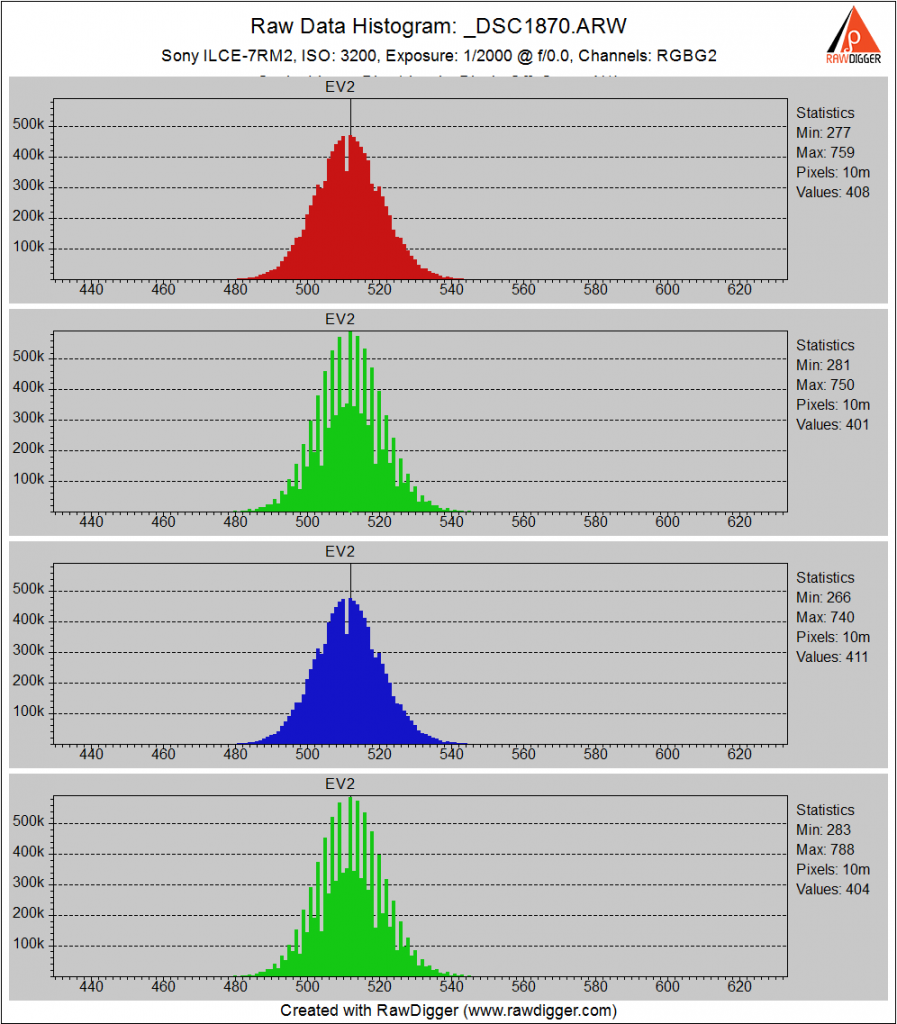
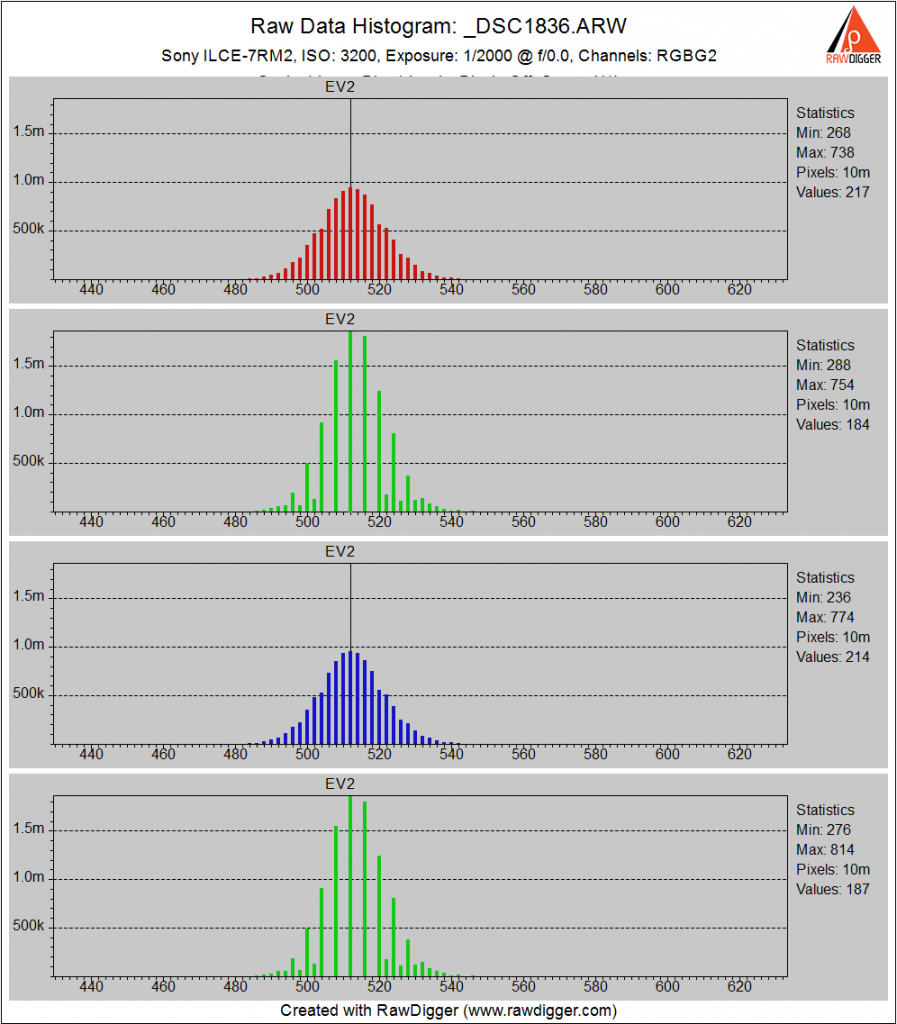
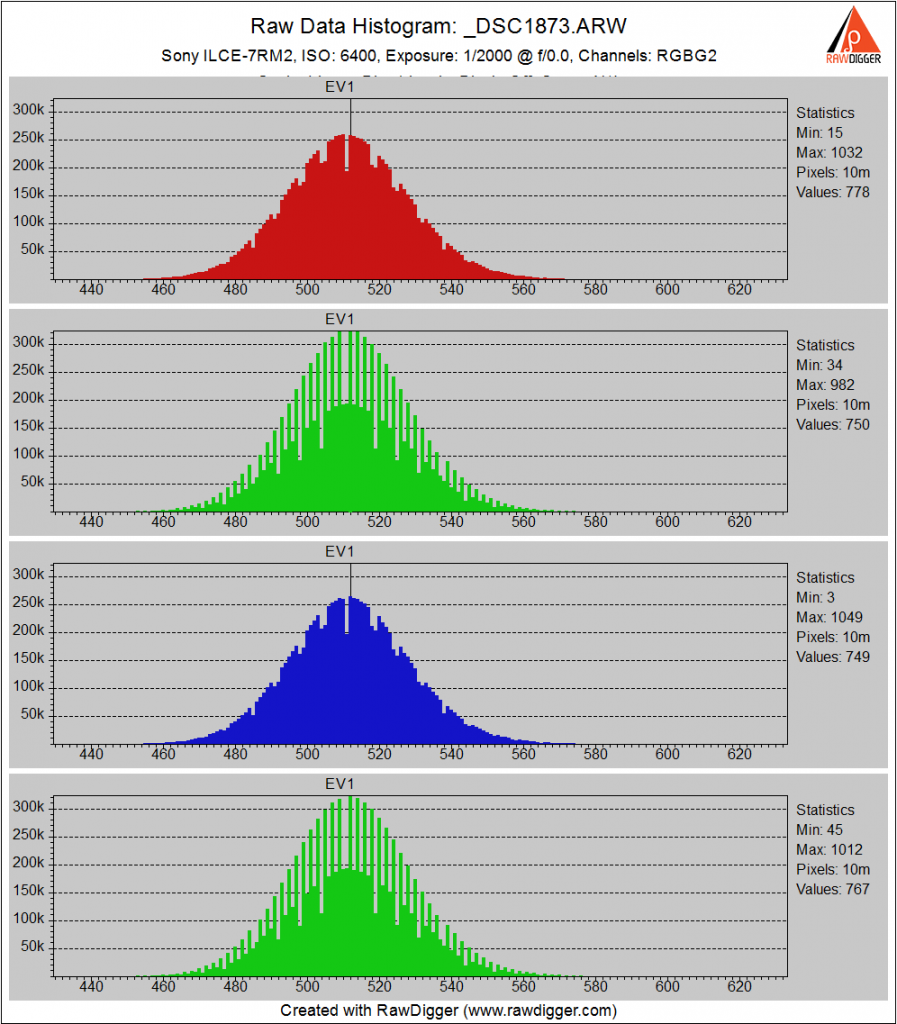
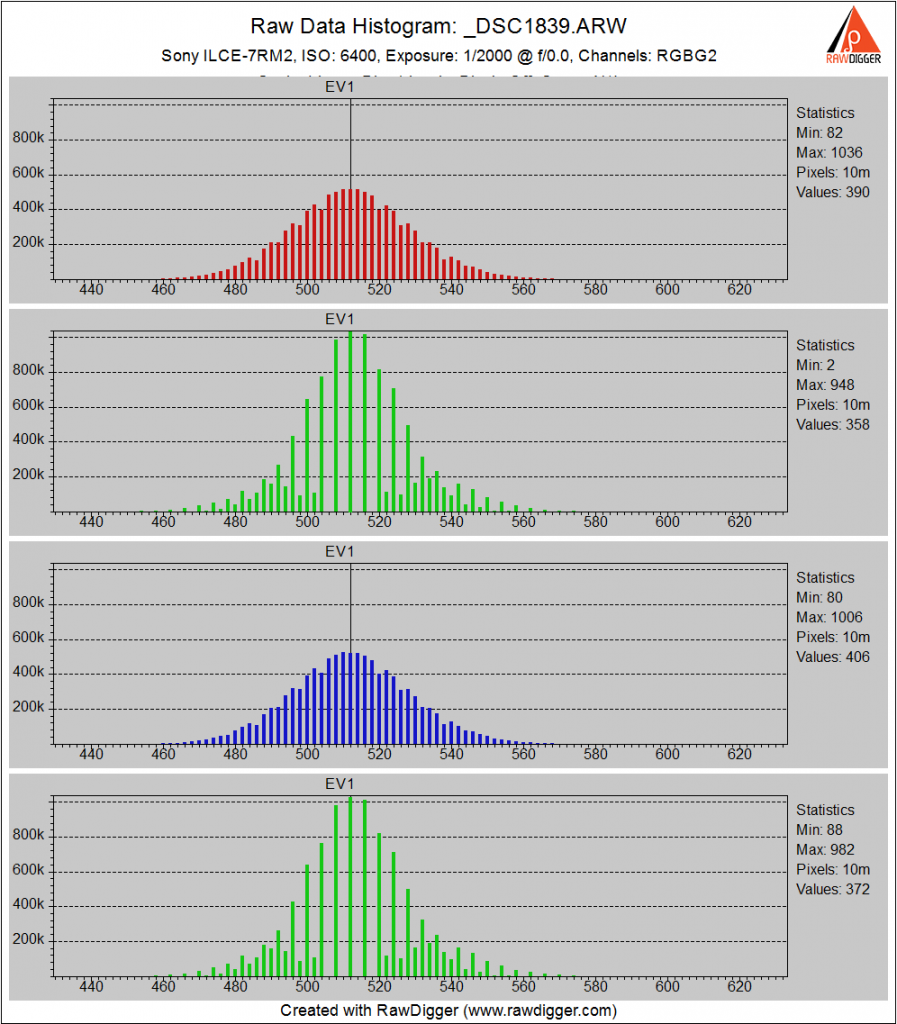
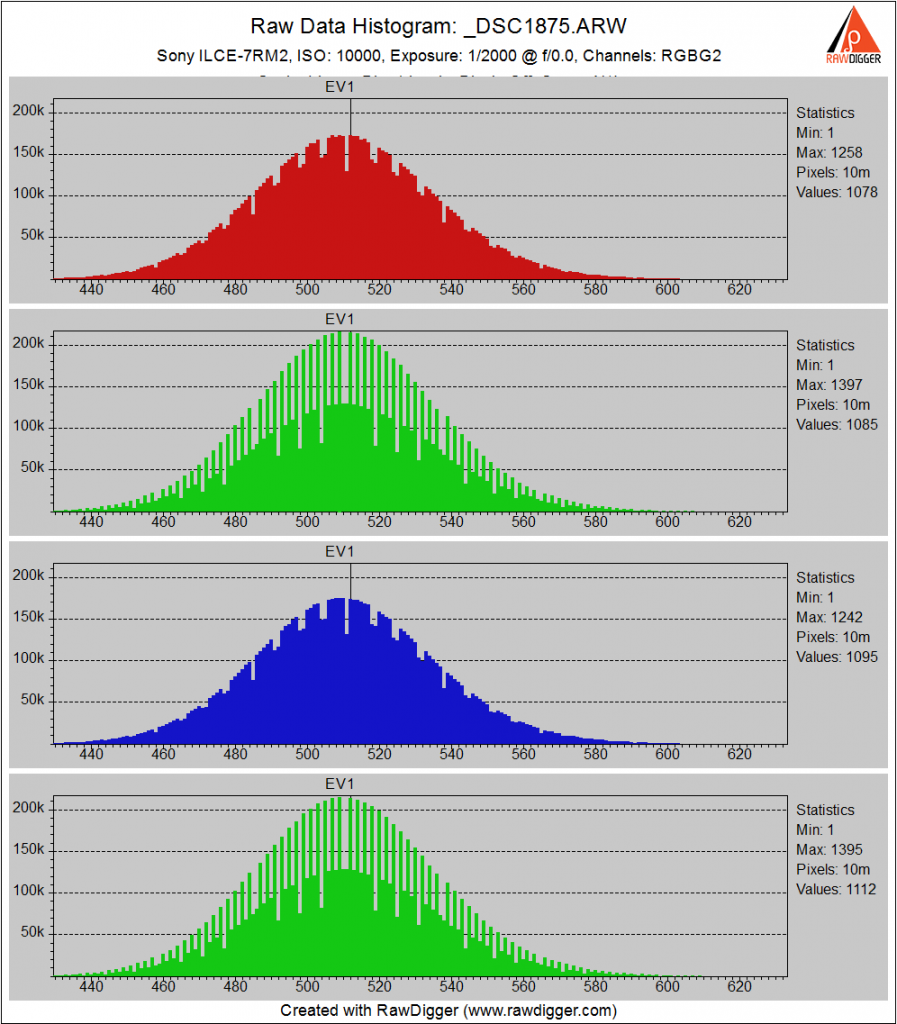
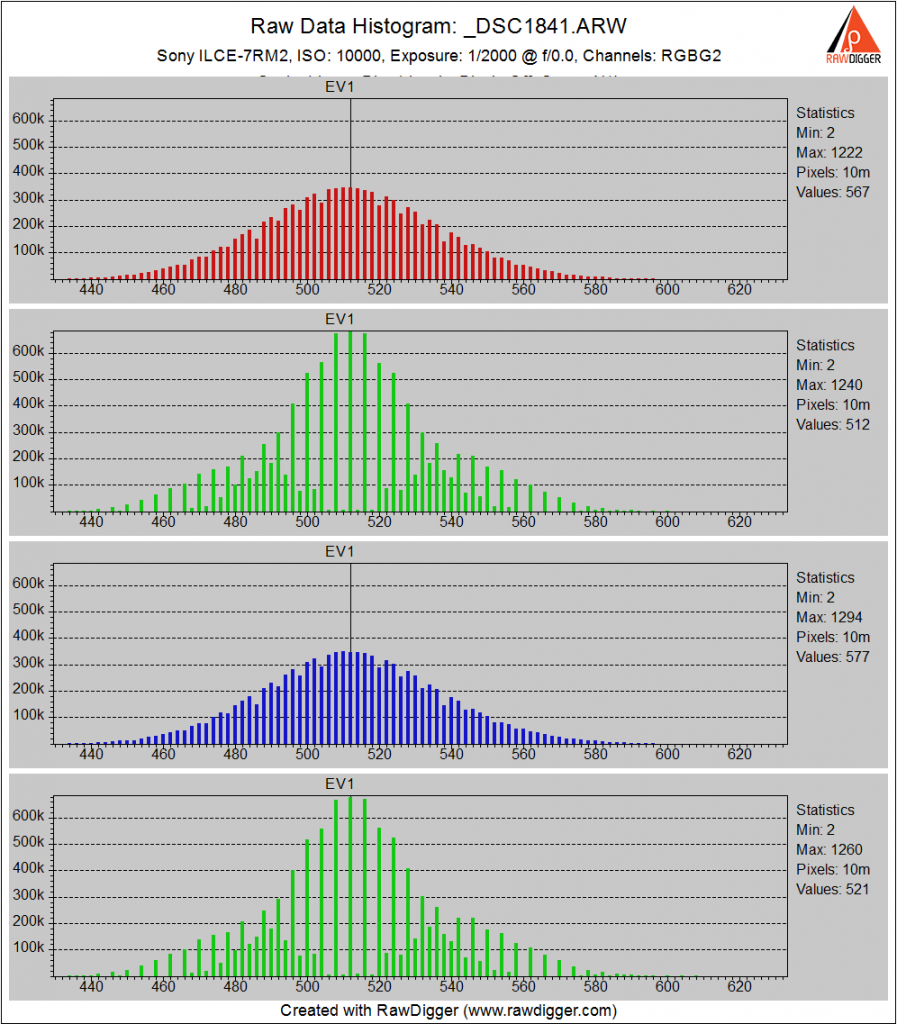
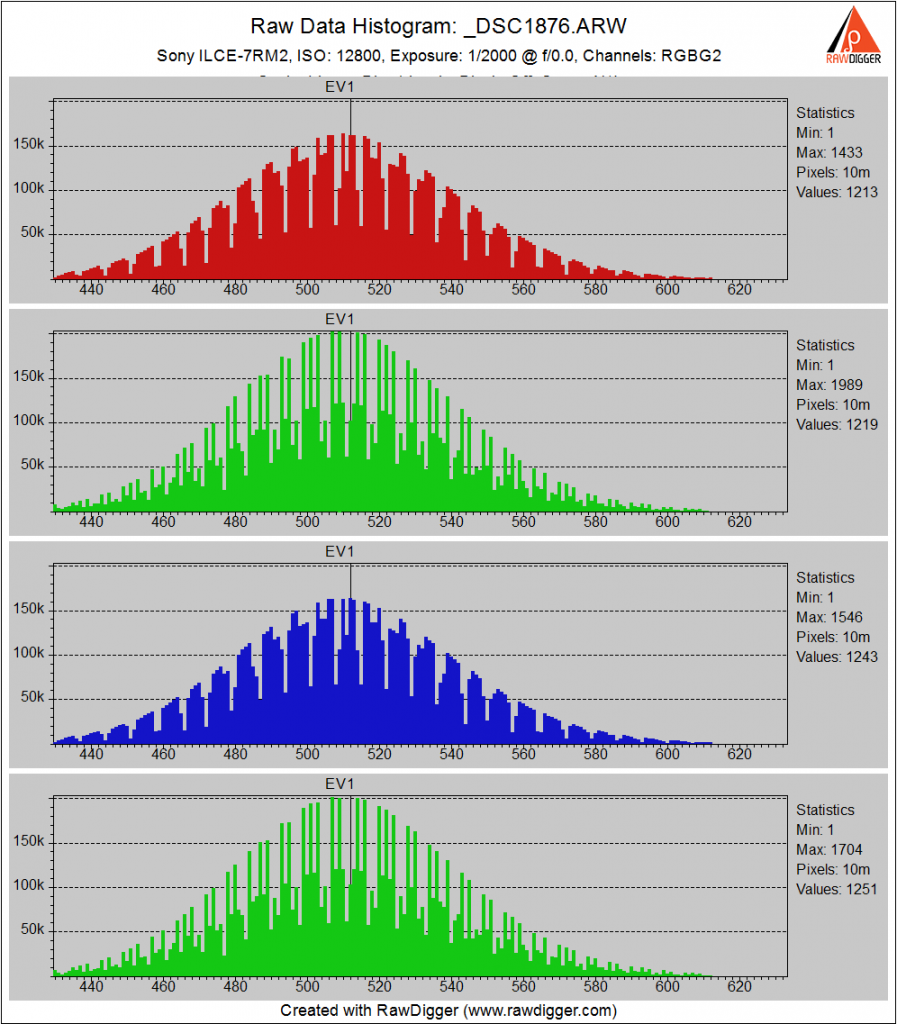
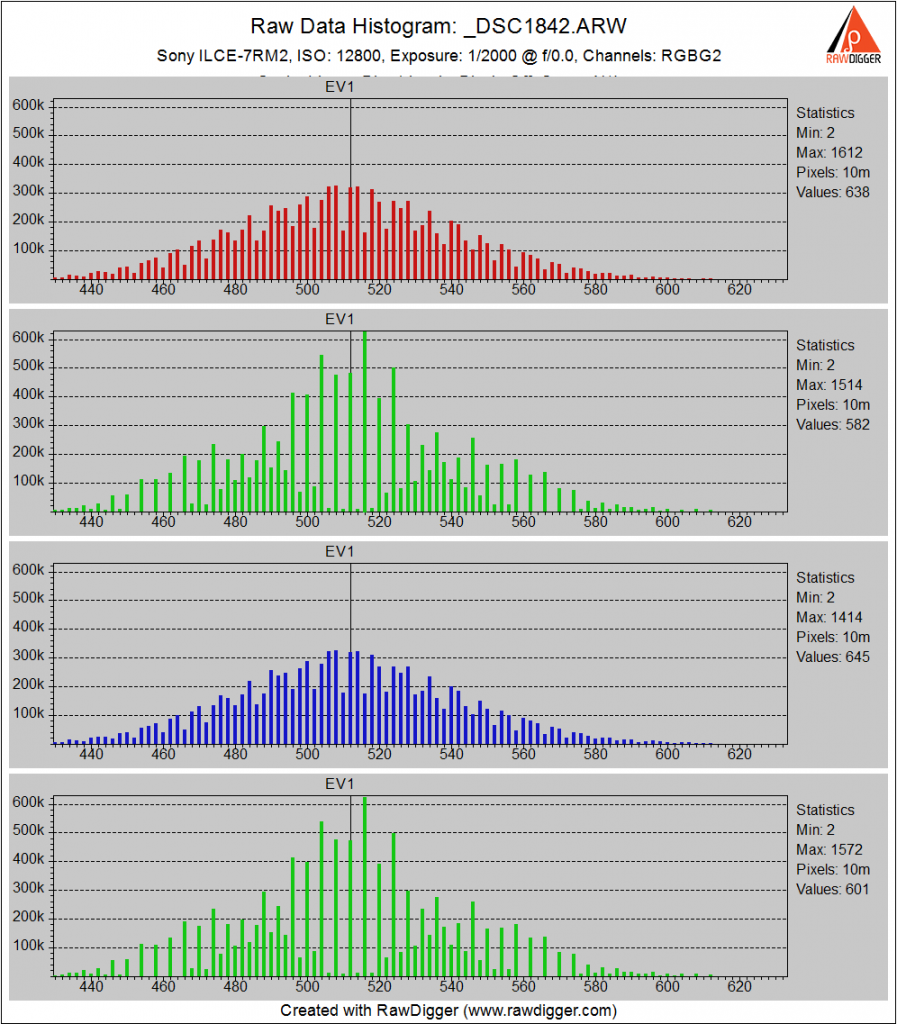
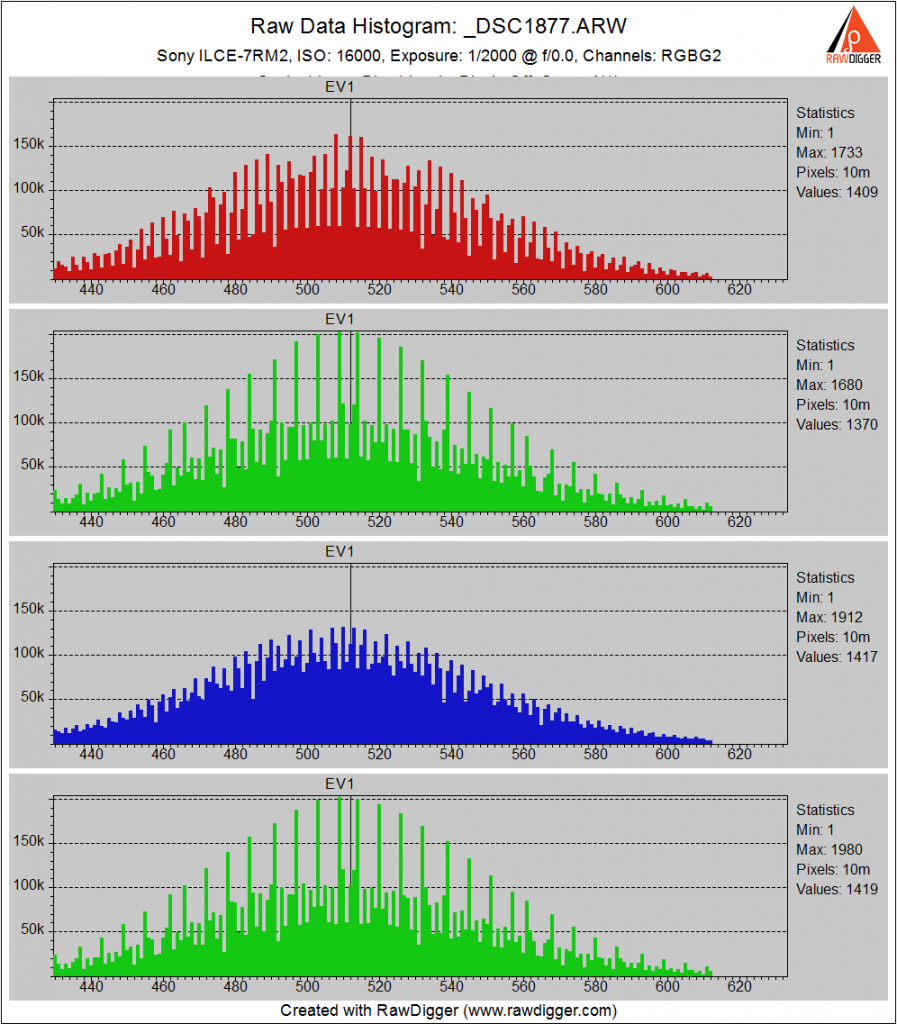
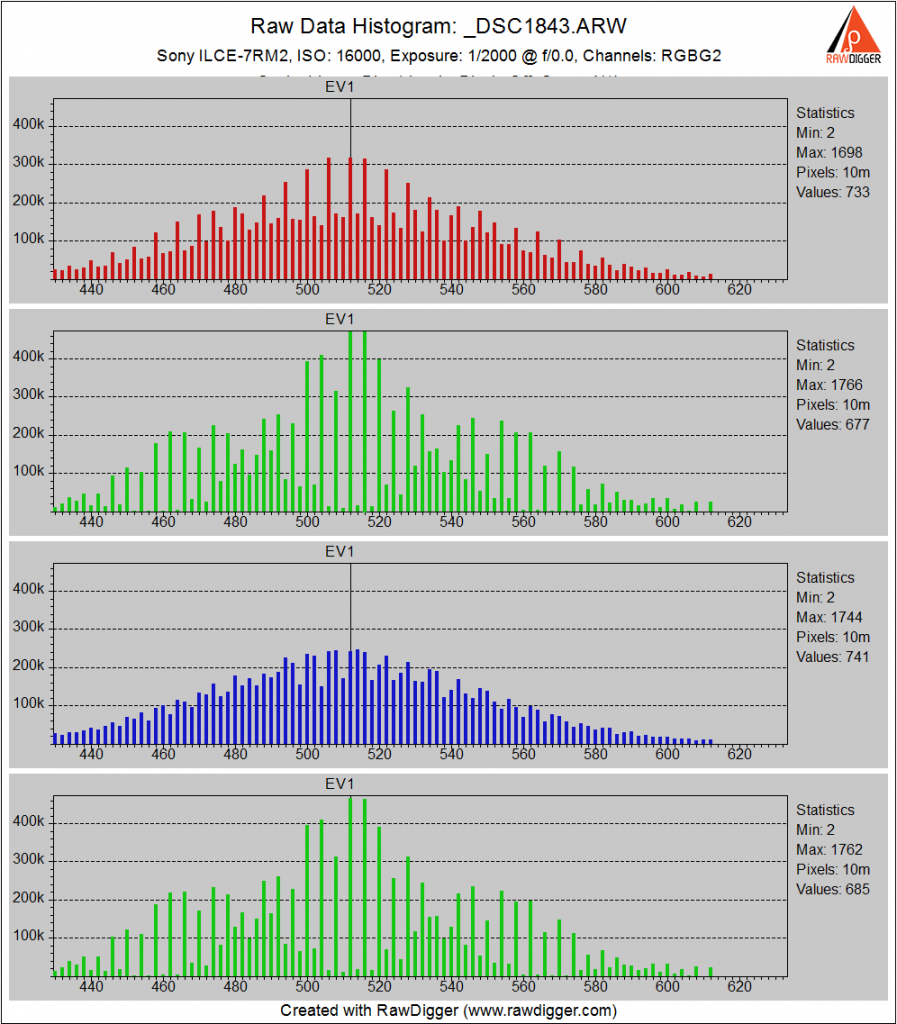
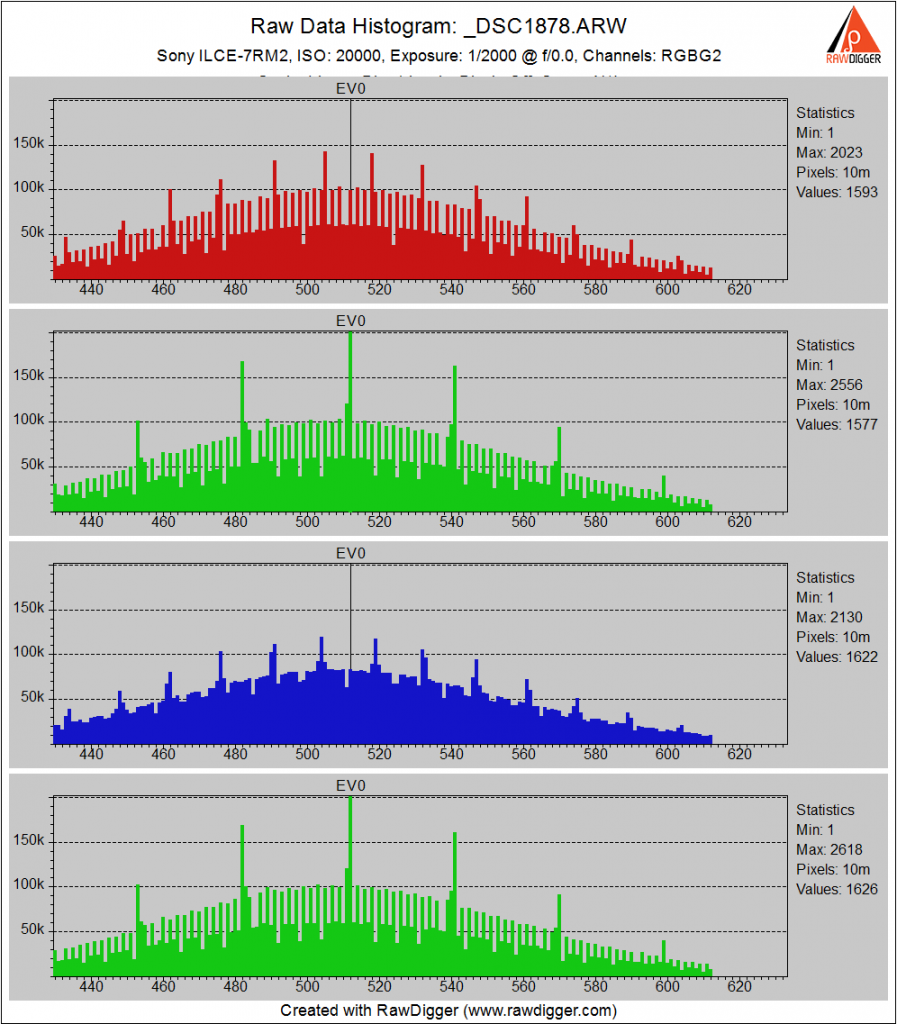
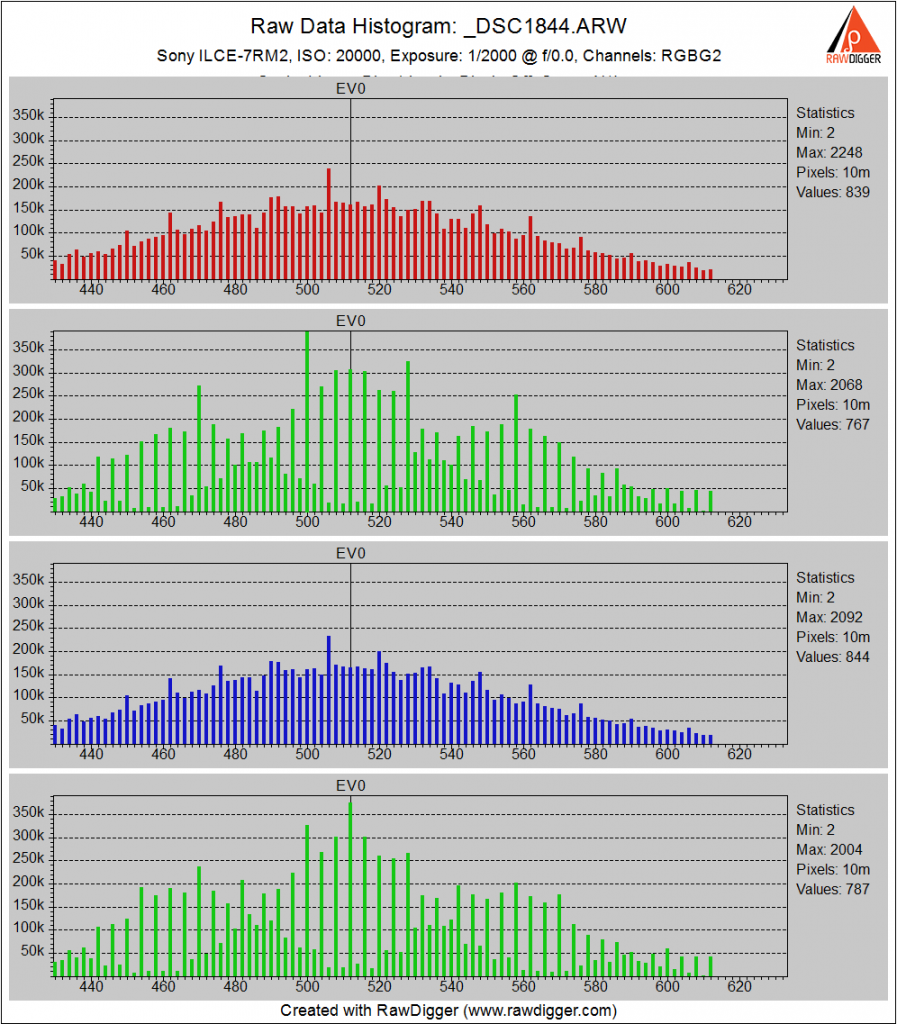
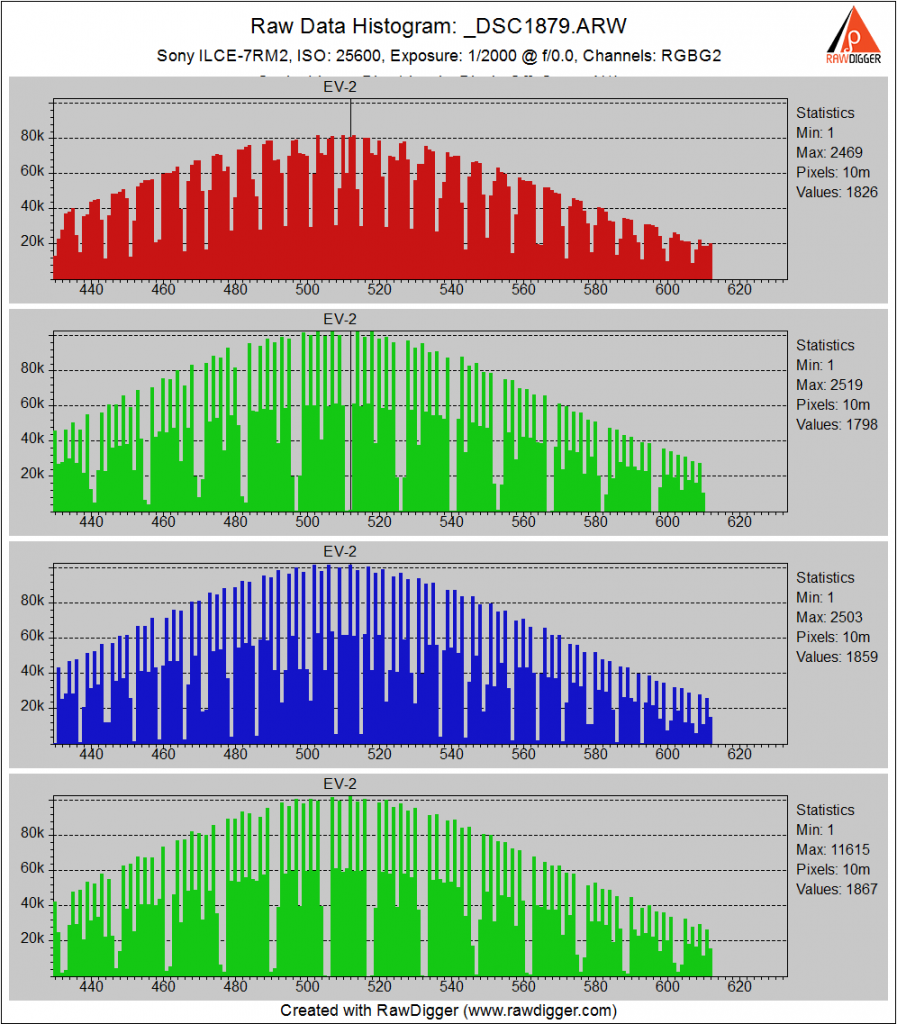

.
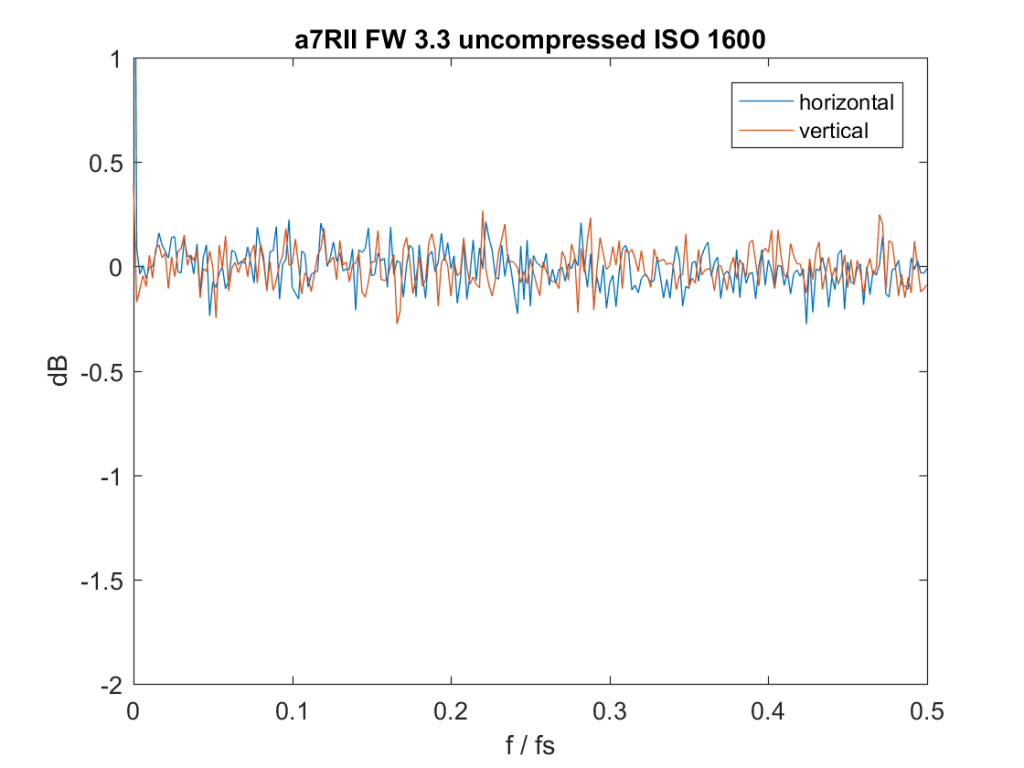
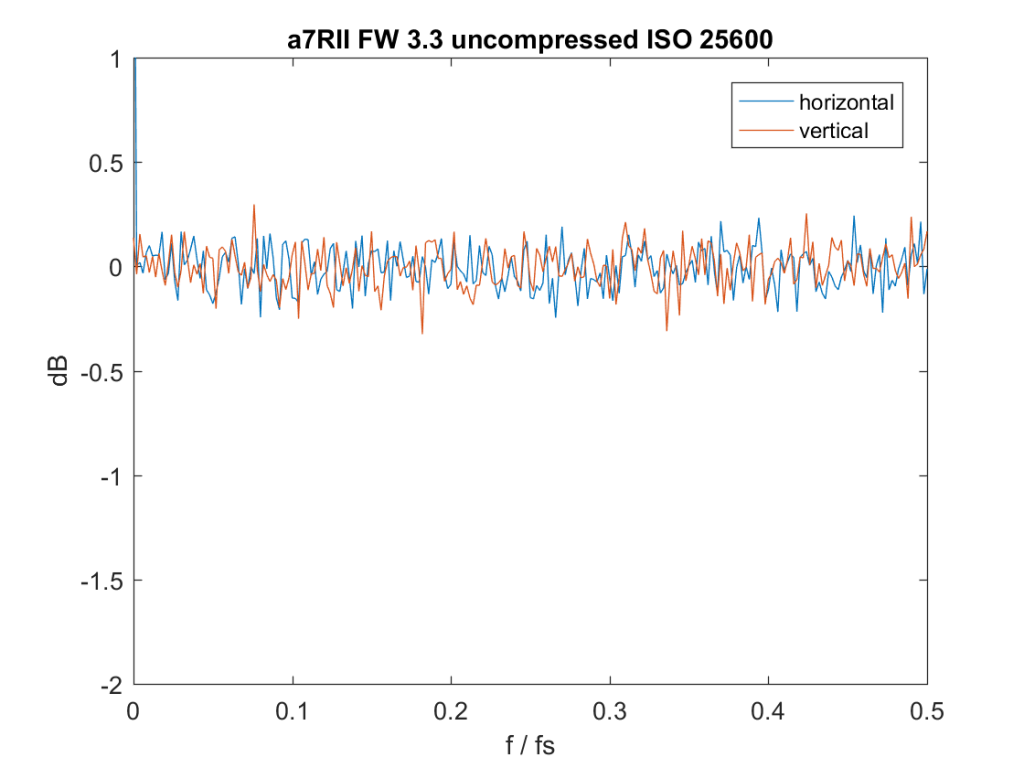
Hi Jim,
First of all, I would like to thank you for doing all the detailed test for a7r ii. I just placed an order for landscape photography and I do quite some nightscape/astrophoto so I was drawn to your blogs. Could you provide you opinion about the dark current more in the perspective of practical usage in the dark? Like if what would you do to take a 25s 3200 ISO photo of milkyway?
Thanks
Fox
I think the diffuse portions would be fine, as would the very bright stars. You might lose some of the dimmer individual stars.
Jim